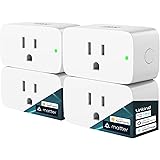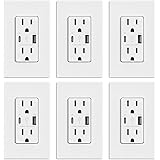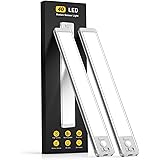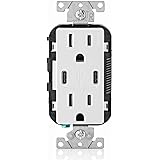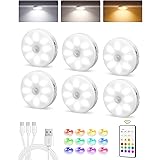Building a robust smart home in 2025 demands strategic planning. The landscape features diverse platforms, evolving protocols, and innovative devices. This accompanying post delves deeper into the concepts discussed in the video above. We will explore platforms, demystify protocols, and highlight top device categories. Understanding these elements is key to a cohesive, automated living space.
Optimizing Your Smart Home Platforms for 2025
Selecting the right smart home platform is crucial. It acts as the central nervous system for your automated abode. Your choice dictates control, integration, and future expansion. Several dominant players exist, each with distinct strengths and weaknesses. Understanding these helps you pick the best fit.
1. Home Assistant: The Architect’s Blueprint
Home Assistant stands as a titan in smart home circles. It is not just a platform; it is an open-source operating system. Imagine it as a blank canvas for the ambitious smart home architect. This system offers unparalleled customization and flexibility. Many users find it the ultimate solution for complex automations. If other platforms feel like pre-fabricated homes, Home Assistant is a custom-built mansion. It offers a level of control beyond commercial offerings.
The platform runs locally on a mini-server. Devices like the Home Assistant Green, priced at $99 USD, are popular choices. This local processing boosts privacy and reliability. Updates integrate the latest Matter standard quickly. It connects with virtually every smart device imaginable. The only hurdle is its steeper learning curve. However, this investment of time yields significant returns. It is a powerful tool for dedicated automators.
2. Apple Home: The Walled Garden’s Appeal
For Apple loyalists, Apple Home provides a seamless experience. It prioritizes simplicity and user-friendliness. Consider it the well-manicured garden within the Apple ecosystem. Devices connect easily, often with just a scan. This platform ensures local control through a home hub. Apple TV 4K or HomePods serve this function reliably. Many use Apple Home as a sleek user interface (UI). They often pair it with Home Assistant for deeper automation. This strategy combines ease of use with powerful backend capabilities.
3. Google Home & Amazon Alexa: Cloud-Powered Conveniences
Google Home and Amazon Alexa offer broad device compatibility. They are excellent for Android/Windows users or existing Amazon device owners. These platforms are like vast public parks; easy to access but with less privacy. Setup is incredibly simple, often plug-and-play. However, their reliance on cloud processing can introduce latency. This might cause slower response times for voice commands. For basic controls, they perform adequately. For advanced, local automations, they often fall short.
4. Samsung SmartThings: Ecosystem Integration
Samsung SmartThings is ideal for Samsung ecosystem users. It provides a solid starting point for automation. Its integration with other Samsung devices is a major draw. However, like other proprietary systems, it has limitations. Advanced users might still gravitate towards Home Assistant. SmartThings serves as a reliable option for brand-loyal consumers. It focuses on integrating Samsung’s diverse product lines.
5. Homey: The Designer Hub
Homey offers a slick, aesthetically pleasing experience. LG’s acquisition shows confidence in its design. It features a beautiful app and refined automation. Think of it as a boutique cafe for smart home enthusiasts. The Homey Pro Mini, at $200 USD, presents a compact option. Despite its polish, its closed-source nature limits device compatibility. It lacks the massive community support of Home Assistant. While elegant, it faces stiff competition from more open alternatives. The Home Assistant Green with SkyConnect, for instance, costs $50 less and offers more.
Understanding Smart Home Protocols: The Languages of Devices
Before purchasing smart home devices, grasp their communication methods. Protocols are fundamental rules for device interaction. They dictate how devices speak to each other. Imagine them as different languages spoken by your gadgets. A foundational understanding simplifies your setup. It ensures seamless integration across your smart home ecosystem.
1. Wi-Fi: The Ubiquitous Connector
Wi-Fi is the most common protocol. Most smart devices use it for internet connectivity. It’s like the universal common tongue of the internet. However, Wi-Fi can consume more power. It may also crowd your home network. Too many Wi-Fi devices can slow down your internet. This protocol is best for devices needing high bandwidth. Examples include smart cameras or streaming devices. For simple sensors, it can be overkill.
2. Thread: The Mesh Network Innovator
Thread represents a significant leap forward. It creates a robust, self-healing mesh network. This is like building a series of interconnected digital pathways. Devices can route data through each other, extending range. It uses very little power, perfect for battery-powered sensors. Thread also offers quick response times. Many newer devices, especially those with Matter, support Thread. It requires a Thread Border Router for internet access. Apple TV 4K or HomePod minis often fill this role.
3. Zigbee & Z-Wave: The Original Mesh Builders
Zigbee and Z-Wave are long-established mesh protocols. They are like the original railway systems for smart devices. They also form mesh networks, enhancing reliability. These protocols use lower frequencies, avoiding Wi-Fi congestion. Dedicated hubs, like the Philips Hue Bridge, are often required. One hub can manage many devices. This simplifies your network, reducing clutter. These protocols excel in reliability and energy efficiency.
4. Matter: The Universal Translator
Matter is a transformative smart home standard. It acts as a universal translator for various protocols. Previously, device incompatibility was a major pain point. Think of Matter as a diplomatic agreement between device manufacturers. It allows devices from different brands to communicate. Nest Thermostat integration with Apple Home is a prime example. Matter streamlines setup with QR codes. It enables device credential sharing between platforms. This standard is a significant step towards true interoperability. Not all devices support Matter yet, but its adoption is growing rapidly.
5. Aliro & Ultra-wideband (UWB): The Future of Access
Aliro is an emerging standard for smart locks. It builds on Apple Home Key’s NFC technology. Aliro allows both iPhone and Android users to tap-to-unlock. This broadens access beyond Apple’s ecosystem. Ultra-wideband (UWB) is an even more advanced technology. It enables precise spatial awareness, like an AirTag’s finding feature. UWB in smart locks offers highly accurate auto-unlocking. Your door “knows” exactly how far you are. It can detect your approach direction and speed. This eliminates the “wait-at-the-door” problem of older Bluetooth locks. The Schlage Sense Pro and UltraLock Bolt Mission are leading this charge. They promise truly seamless entry.
Enhancing Your Smart Home with Key Devices
The right smart devices elevate your living experience. They move beyond simple automation to intelligent interaction. Here’s a look at essential categories for a modern smart home.
1. Smart Thermostats: Your Climate Conductors
Smart thermostats are energy-saving heroes. They replace traditional models with intelligent control. These devices act as conductors for your home’s climate. They learn your preferences, adjusting for weather and humidity. The new 4th generation Nest Thermostat features a sleek design. It comes with remote temperature sensors. Ecobee’s Premium Smart Programmable Thermostat offers a larger screen. It supports multiple voice assistants. While Ecobee has not yet announced Matter support, Nest has embraced it. This makes the Nest Thermostat a top recommendation for seamless integration.
2. Smart Locks: Your Digital Doorman
Smart locks offer security and unparalleled convenience. They replace keys with digital access. Imagine having a personal digital doorman for your home. You can unlock with your phone, watch, or keypad. Guest codes can be generated for temporary access. Crucially, they confirm if you locked the door remotely. The Schlage Sense Pro and UltraLock Bolt Mission offer Matter over Thread. They support Apple Home Key and tap-to-unlock. For renters, August and Level allow keeping your existing key. An August Bridge significantly extends battery life, from a mere few months to almost half a year.
3. Smart Lighting: Ambiance & Efficiency
Smart lighting is often the entry point into smart homes. It offers both aesthetic and practical benefits. Think of it as painting with light, transforming your space. Matter’s increasing adoption simplifies multi-brand setups. Philips Hue, LIFX, Govee, Nanoleaf, Lutron, and GE Cync are major players. Philips Hue, though pricier, offers consistent reliability. They even make innovative retrofit LED disks for recessed lighting. Smart switches are also available, preventing accidental turn-offs. They integrate existing wall switches into your smart system.
Motion sensors are vital companions to smart lights. Passive infrared (PIR) sensors detect movement. They are like a vigilant sentry, turning lights on when you enter. These can automate scenes based on time of day. Millimeter wave sensors go further, detecting presence. They are like a silent observer, keeping lights on as long as someone is present. Lights turn off only after the room is truly empty. This precise control saves energy and enhances comfort.
4. Automated Blinds, Shades, and Curtains: The Silent Sentinels of Privacy
Automating window coverings adds privacy and energy efficiency. Lutron, IKEA, and SmarterHome offer excellent options. Lutron is widely regarded for its quality. Their battery-operated wood blinds last for years. These automated shades are like silent sentinels. They manage natural light and temperature. They also enhance privacy with effortless operation. This category boosts both comfort and sustainability in your home.
5. Security Systems: Your Home’s Digital Watchdog
Smart security systems offer peace of mind. They can integrate deeply with your smart home. Consider how much your security sensors should interact with other devices. This integration allows for powerful automations. When a door sensor opens, your lights can automatically turn on. DIY systems like SimpliSafe or Ring offer professional monitoring. For tech enthusiasts, Home Assistant allows building a custom system. Abode and Ring Alarm integrate well with Home Assistant. Abode even integrates with all major platforms locally. SimpliSafe lacks Apple Home or Matter integration. This makes it less appealing for integrated setups.
6. Smart TVs & Streaming Devices: The Entertainment Hub
For smart TV integration, focus on the streaming box. These are more amenable to smart home integration. They act as the entertainment hub’s brain. Apple TV 4K, Google TV Streamer, and Fire TV offer Matter support. The Apple TV 4K and Google TV Streamer also have Thread built-in. This enables local automations. Your Apple TV can turn off living room lights when the TV turns on. This local control ensures swift and reliable actions. It’s a key component for media-centric automations.
7. Smart Appliances & Plugs: Utility vs. Complexity
Smart appliances often add complexity without significant benefit. A smart oven turning off remotely is useful. However, a simple smart plug often achieves the same goal. Think of smart plugs as the versatile utility knives of your smart home. They transform any ‘dumb’ appliance into a smart one. They are inexpensive, often around $10 USD. TP-Link, Amazon, and Sonoff make reliable options. Sonoff Zigbee plugs are particularly easy to set up with Home Assistant. They are perfect for holiday decorations or automating simple electronics. Prioritize utility over unnecessary complexity when considering smart appliances.
The Matter standard continues to evolve, promising greater interoperability. While not every smart home device supports it, the trend is clear. We are closer to a truly unified smart home experience than ever before. Realistically, expect to use multiple platforms in 2025. Home Assistant remains the best bet for comprehensive integration. The promise of an automated home is now more achievable. Devices are more efficient and capable. Setting up and maintaining your smart home still requires effort. But once established, the system often fades into the background. Your smart home simply works, just as it should.




